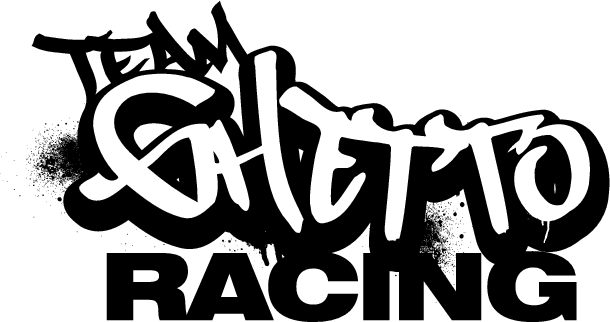Jimny wheel alignment and steering settings
There’s a lot of people with some odd ideas about how difficult wheel alignments are for Jimnys, but also very little info out there. You also get a lot of people adjusting steering boxes without necessarily fully understanding how to get the adjustment right.
Sections
- Wheel alignment
- Specifications
- Front adjustments
- Rear adjustments
- Steering adjustments
- Steering wheel play specifications
- Centering steering wheel
- Adjusting steering box freeplay
Wheel alignment
Specifications
| Alignment parameter | Front | Rear |
|---|---|---|
| Toe | Toe in 4 mm ± 2 mm (Measured with stock wheels/tyres) | 0 ± 5 mm |
| Camber | +0.5º ± 1º | 0º ± 1º |
| Caster | 1º 55′ ± 1º (1.92º ± 1º) | N/A |
| Kingpin inclination angle | 13º ± 1º | N/A |
| Steering angle | Inside: 34º ± 2º Outside: 30º 18′ ± 2º (30.3º ± 2º) | N/A |
Front adjustments
Toe
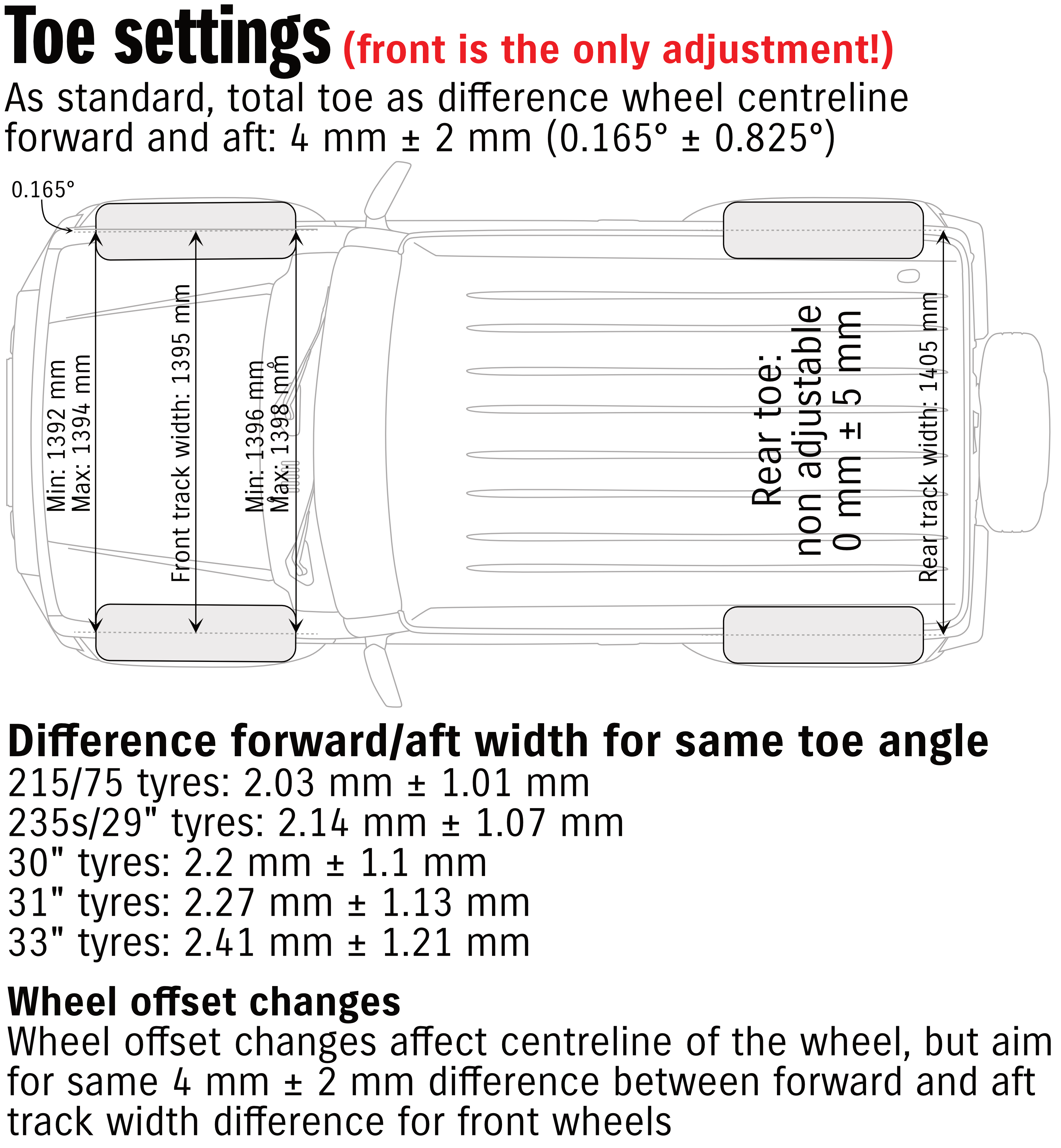
This is the only truly adjustable alignment parameter. You need to adjust this through adjusting the toe rod between the two front wheels, and you need to adjust each side equally (if you don’t, you’ll find the steering angle becomes weird and the car will have some odd behaviours when turning).
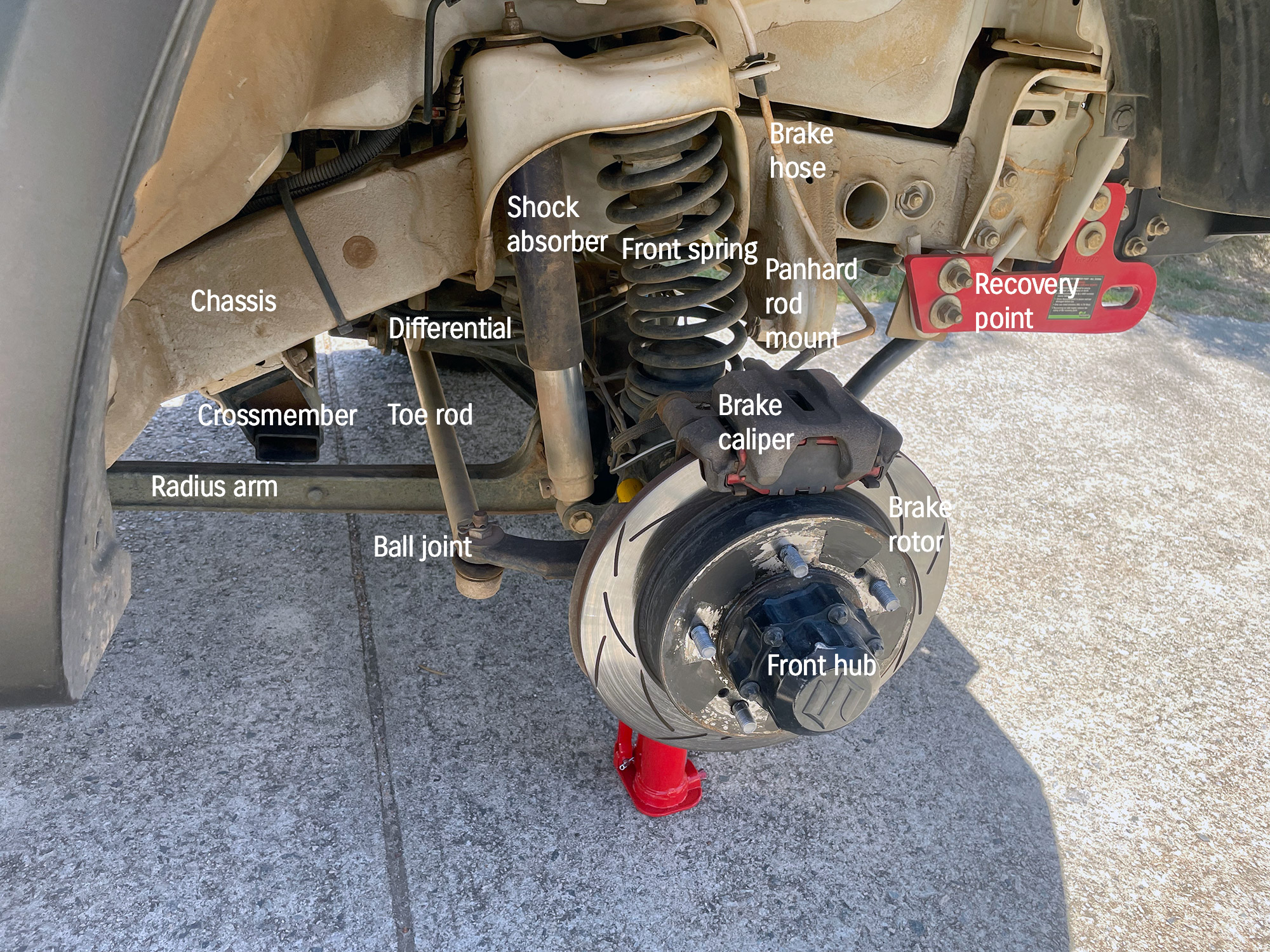
Tie rod ends each have a locking nut, undo this while holding the toe rod and then spin the toe rod to align with reference to parallel with the rear axle (assuming the rear axle is straight). Once aligned, do up the lock nuts to 65 Nm.
Most wheel alignment shops do insufficient toe in for the Jimny, they run them closer to zero toe. This is better for tyre wear but it reduces straight line stability.
Note that toe is not changed by a suspension lift, as the toe rod is independent of the suspension height. Only the steering wheel centre position is affected by a suspension lift, rather than the toe.
Caster
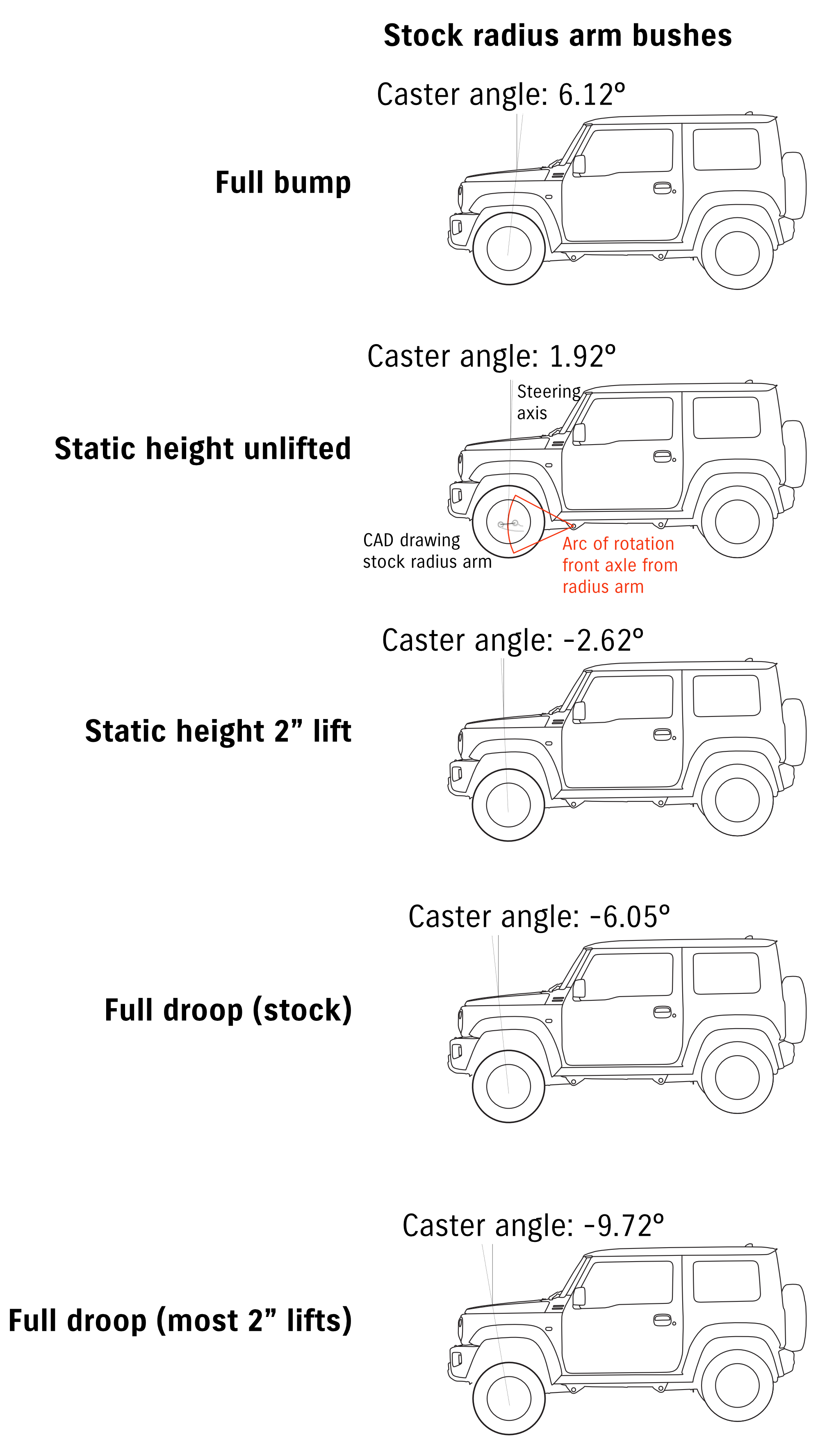
Caster is the key parameter that affects steering stability. The more caster that is run the more stable the car is, although too much caster can cause other issues.
Caster is not adjustable but is affected by where the suspension is sitting at its static ride height. When you lift the front suspension as part of a suspension lift, you change the caster angle as the axle is rotated by the radius arms.
To correct for this caster change (i.e. add caster correction) you either use offset bushes in the radius arms to bring the axle closer to standard positions. Jimnys vary from the factory by a reasonable amount, so one person’s car might need caster correction more than another person’s car. In general, caster correction starts to become something more people consider at 40 mm, and generally more than 50 mm lift requires replacement radius arms to fully correct the caster change from a suspension lift. If you can afford it, replacement arms are generally the better choice but offset bushes can be useful as a slightly more affordable way to achieve this.
If your car has had a suspension lift and has had caster correction installed, but the car feels very unstable or scary on the highway, it is worth checking that the caster correction bushes have not been installed upside-down. You can tell this by looking at the caster numbers on a wheel alignment; they will be close to the standard specification of 1.92º ± 1º, if they are not then look underneath the car to see if they have been installed upside-down by using the information in this link.
Camber
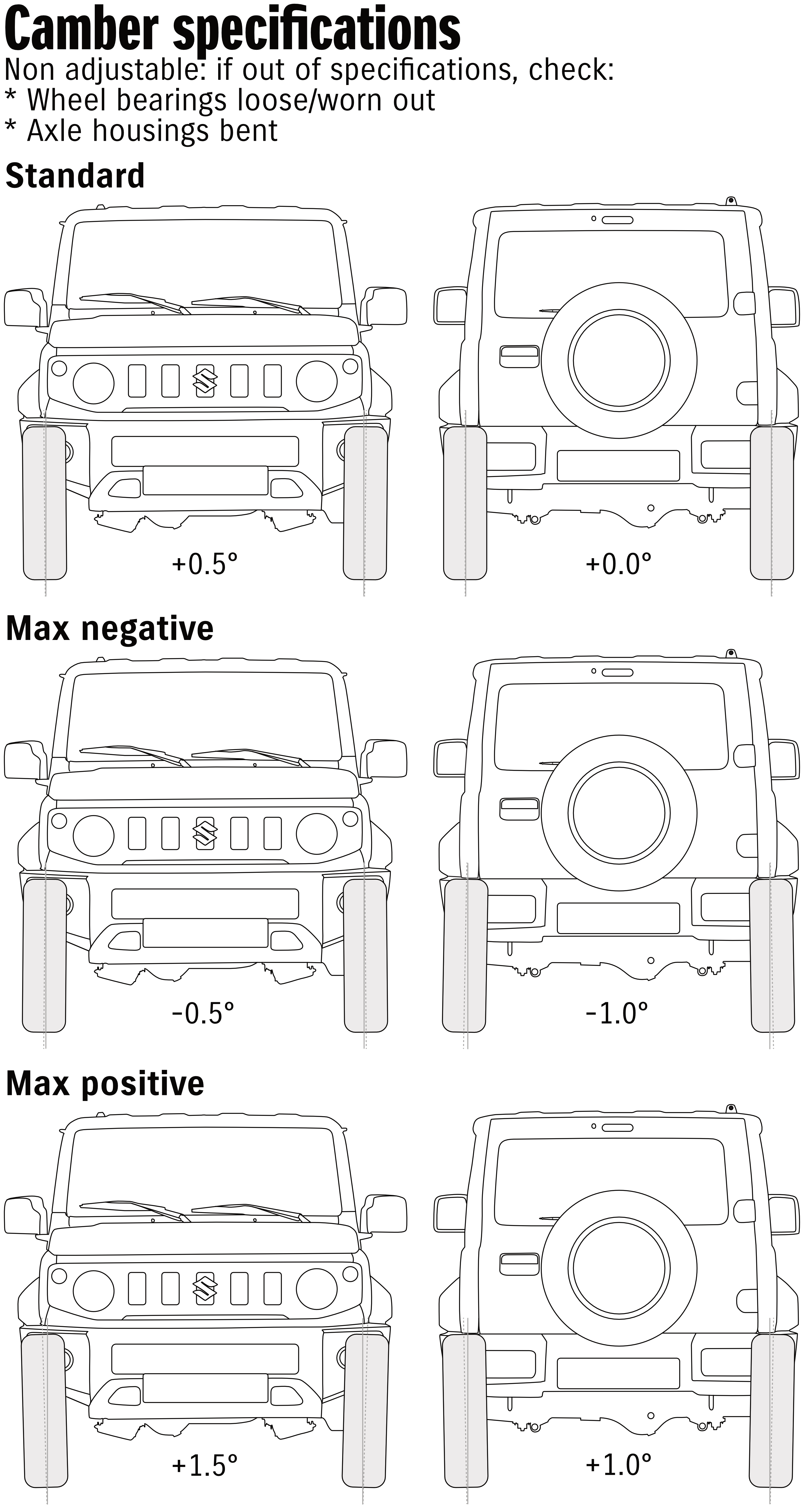
The Jimny runs some positive camber on the front wheels (0.5º ± 1º); any variation outside of these specifications points to a bent axle housing (usually from a hard landing offroad, or hitting a very large pothole at speed). With no adjustment the only remedy here is a replacement housing.
Kingpin inclination angle
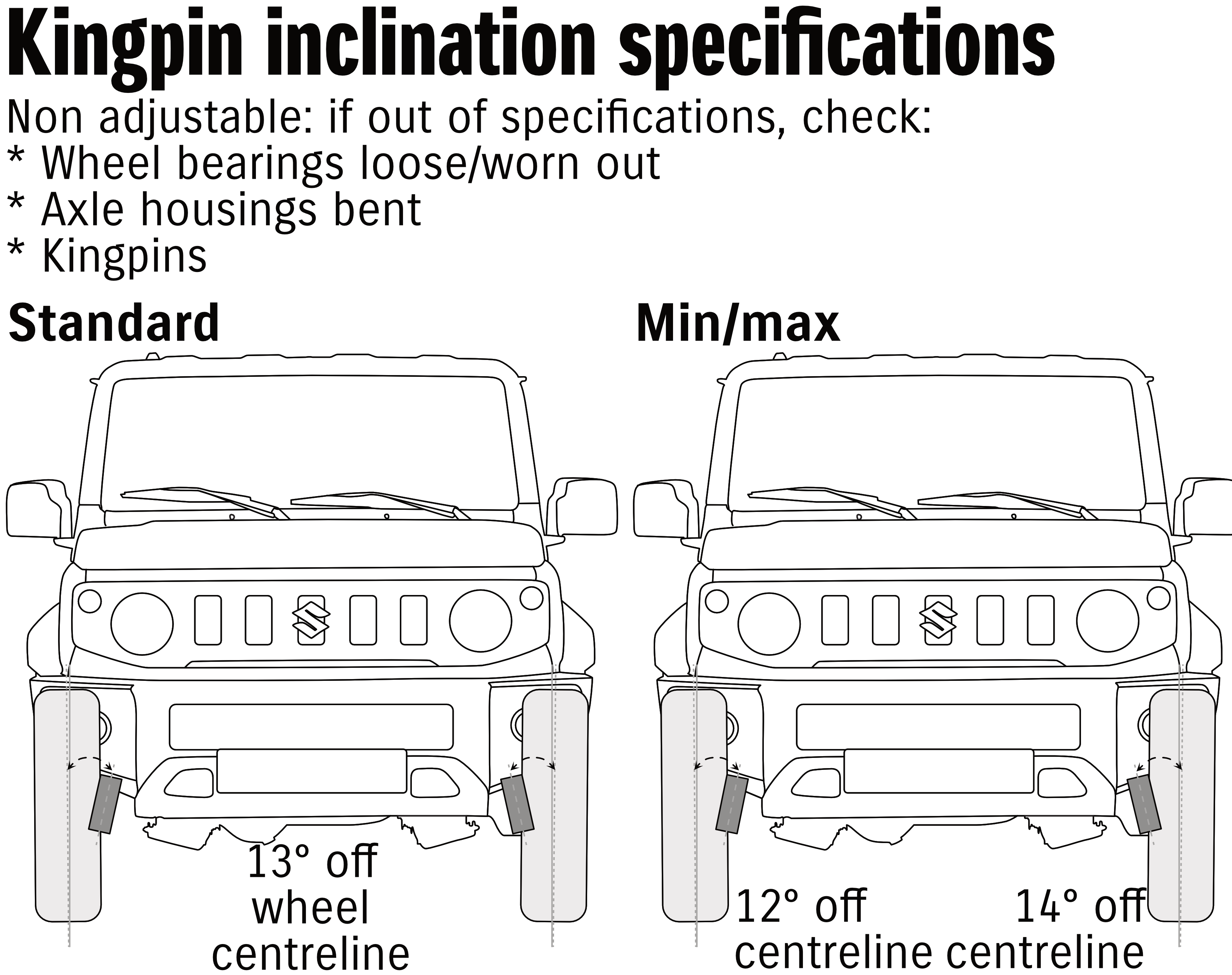
This is another parameter that cannot be adjusted. It can be a sign of a worn out kingpin or kingpin bearings, however, which you’d rectify by overhauling the swivel hub. If that doesn’t fix it then it is likely either a bent swivel hub or a bent axle housing (usually the latter).
Steering angle
Here’s where you find out if the alignment shop properly adjusted the toe via the tie rod ends. If they adjust one side more than the other then things get a bit weird at steep steering angles. There should be more steering angle at the inside wheel (Ackerman steering geometry) than the outside wheel.
Rear adjustments
Nothing is adjustable here, if things are outside specification then the like culprit is either a buggered wheel bearing or a bent axle housing.
Steering adjustments
Steering wheel play specifications
Centering steering wheel
People overthink this. The steering wheel centre position is dictated by the length of the ‘drag link’, which joins the steering box on the drivers side down to the front of the passenger’s side swivel hub. When a car is lifted with a suspension lift then the distance between the steering box and the passenger’s side wheel becomes greater. The drag link is adjustable for length to correct for this change.
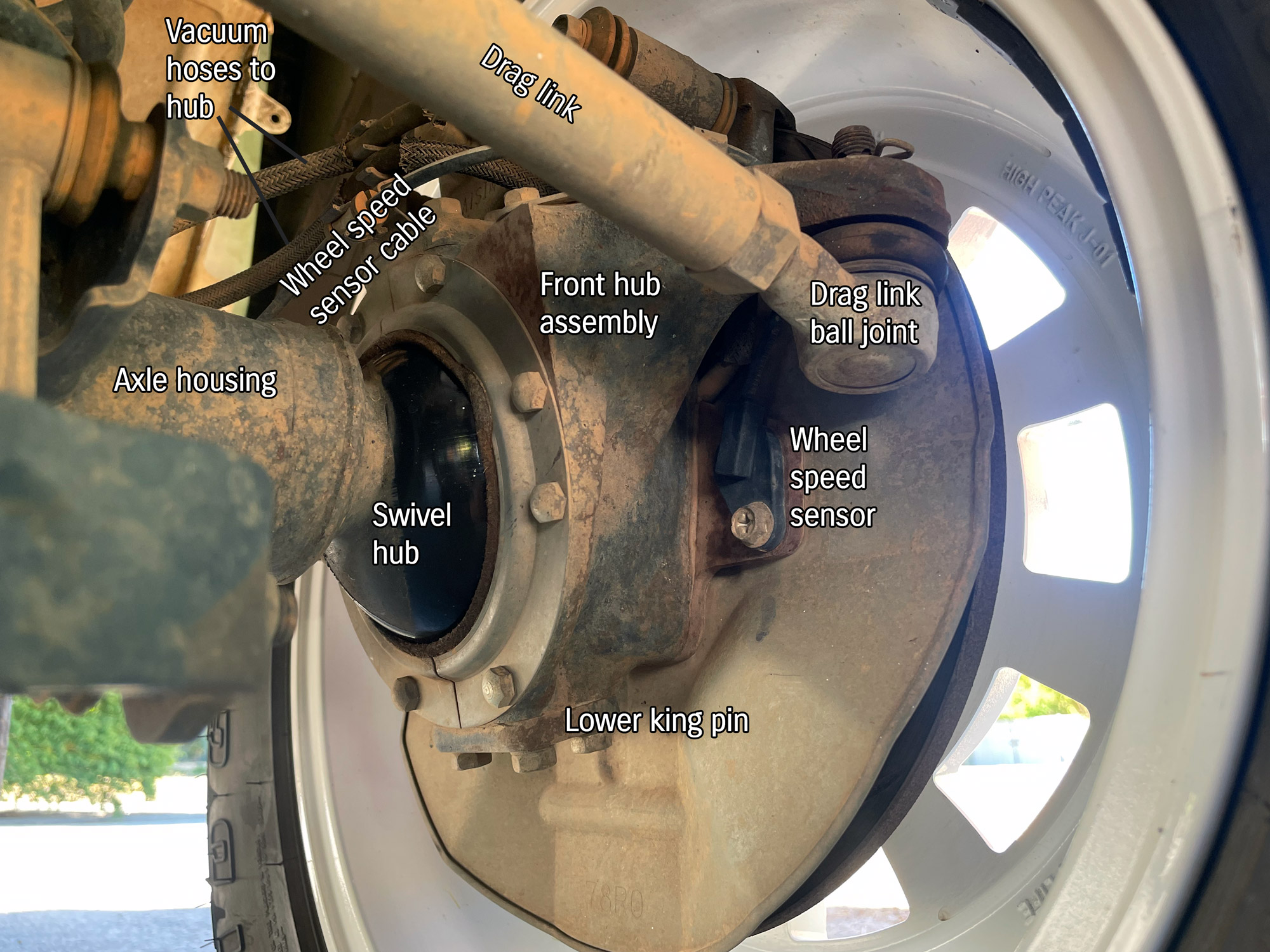
Very small adjustments are needed here, you do not need to turn it much. I usually do 1/6th of a turn and drive the car to see how I’ve done, and then do further adjustments as needed.
